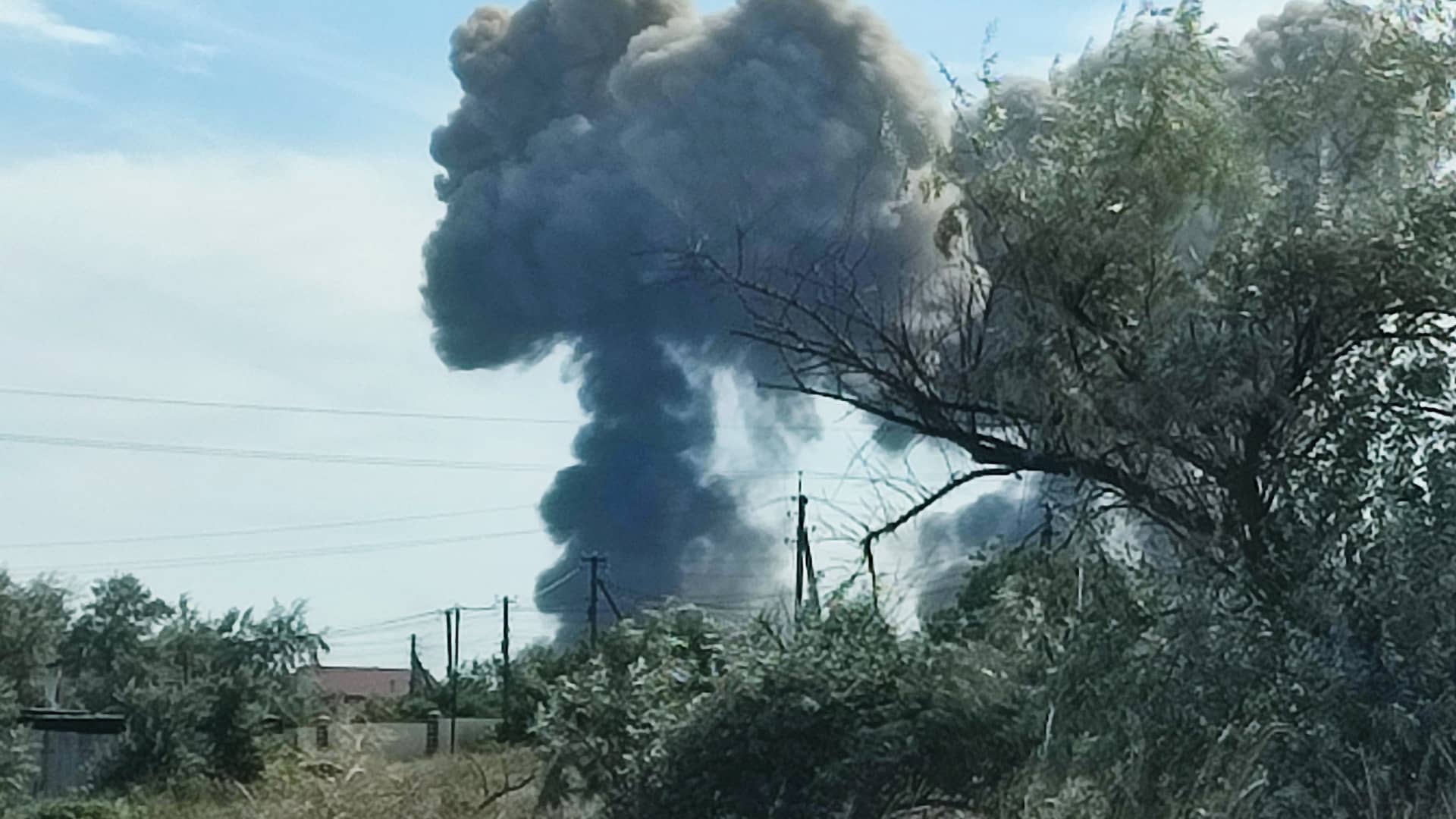Energy
Saturday, August 13th, 2022 9:51 am EDT

New satellite images have revealed the heavy damage to a Russian air base in Crimea that was rocked by explosions earlier this week, calling into question Moscow’s ability to protect the territory it controls in Ukraine’s south.
The pictures, released Thursday, added to a growing belief that the blasts may be the result of Ukrainian attacks, suggesting an ability to strike deep behind enemy lines that could help shift the course of the war.
It comes as Ukraine and Russia traded accusations of new strikes on Europe’s largest nuclear plant, in a crisis that has stoked fears of a catastrophe. The United Nations is set to discuss the situation Thursday.
More from NBC News:
South Carolina woman dies after she was impaled by beach umbrella
Police no longer investigating the Anne Heche car crash
Suspect in Salman Rushdie attack arrested
As international leaders raised the alarm about what would be a dramatic development in the conflict, experts and analysts were assessing another.
Kyiv said nine Russian warplanes were destroyed in a series of blasts at the Saki air base in annexed Crimea on Tuesday, while Russia denied any damage and said the incident stemmed from ammunition detonating.
Ukraine has not publicly claimed responsibility for the blasts.
But the satellite images released by Planet Labs, an American public Earth imaging company, appear to contradict Russian assertions.
NBC News analysis of the imagery suggests two buildings in the northeast corner of the base burned to the ground, with what appears to be the burned-out wreckage of at least six planes visible, and several other planes damaged. NBC News could not independently verify if all the aircraft were airworthy.
From the satellite imagery, it’s clear that the scope of the damage at the Saki air base is quite extensive, said Michael A. Horowitz, a geopolitical and security analyst and the head of intelligence at Le Beck consultancy.
“It may be hard to gauge which of the aircraft are fully destroyed or only damaged, but what’s evident from the images is that at least a dozen of attack aircraft have been put out of combat for a while,” he said.
“Looking at the pictures, what strikes me is how precise this attack was,” Horowitz added.
Whatever exactly happened at the air base, the apparent escalation in Crimea could prove significant strategically and symbolically.
The peninsula holds huge value for both Moscow, which annexed it in 2014 after a referendum that was not recognized by most of the international community, and Kyiv, which has vowed to reclaim Crimea as its land.
An officially acknowledged attack on Crimea could provoke a strong response from Moscow. Last month, Russia’s hawkish former President Dmitry Medvedev promised “judgment day” in the event of an attack on Crimea.
“The symbolism may be most damaging politically for Russia, because there has been a sense that Crimea was almost a red line,” said Neil Melvin, director of international security studies at the Royal United Services Institute, a London-based think tank. “This is actually, from the Russian perspective, Russian territory.”
Crimea is a popular summer holiday destination for Russians and photos after Tuesday’s blasts showed plumes of black smoke rising behind busy golden sand beaches.
Ukrainians are intentionally being vague about whether they carried out the attack and how, Horowitz said, likely in an effort to obfuscate the actual weapon behind the attack while also spreading fear among Russian forces.
Not taking responsibility also mitigates the need for Russia to respond to the attack, which is in Kyiv’s interest and may also be a precondition for the use of Western-supplied weapons, he added.
The Kremlin has little incentive to accuse Ukraine of conducting strikes that caused the damage since that would concede the ineffectiveness of Russian air defense systems, the Institute for the Study of War, a U.S.-based military think tank, said in the aftermath of the incident. The Ukrainian sinking of Russia’s Black Sea flagship in April, a high-profile embarrassment for Moscow, had already revealed their vulnerability in that regard.
Ultimately, the blasts in Crimea could be a prelude to the much-anticipated Ukrainian offensive in the south.
Ukrainian officials were framing the attack as such, the institute said in another assessment Wednesday, suggesting that the “Ukrainian military expects intense fighting in August and September that could decide the outcome of the next phase of the war.”
“The strike has put a number of Russian aircraft out of combat, and may limit Russia’s ability to stop a Ukrainian attack,” Horowitz said. But Ukraine has its work cut out, he added, as Russia has sent a lot of reinforcements to the south and is aware that this may be the next major battle. So Kyiv will need to carry out multiple similar strikes against Russian military bases and weapons depots before launching any major offensive, he said.
Ukraine’s south has been the focus of growing international alarm in the past week over the situation at the Russian-controlled Zaporizhzhia nuclear plant.
United Nations Secretary-General Antonio Guterres called Thursday for an immediate halt to all military activity near the plant. The Security Council will be briefed later at Moscow’s request on what it claims were Ukrainian attacks on the site.
Kyiv has accused Russian forces of using the plant as a “nuclear shield” and being behind the shelling, which raised fears of a disaster worse than Chernobyl. Ukraine’s national energy company accused Russia on Thursday of launching new strikes against the plant.
Meanwhile, the Russian state news agency Tass quoted local Russian-installed officials as saying it was the Ukrainian forces behind the fresh shelling of the plant and its nearby town.
NBC News could not independently verify the claims from either side.
This post has been syndicated from a third-party source. View the original article here.




